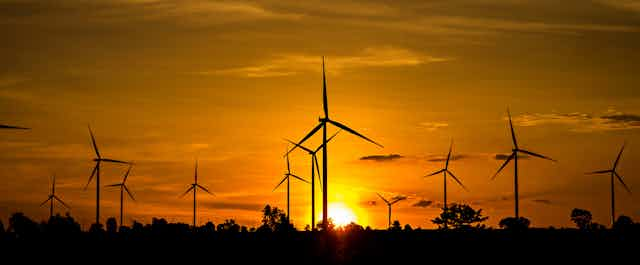The European Commission launched its much-anticipated “Green Deal” on December 11. The project has been spearheaded by European Commission President Ursula von der Leyen, whose presidential tenure began recently on December 1 2019.
The central thrust of the Green Deal is a relentless momentum towards making the EU climate neutral by 2050. This marries up formal political-legal EU ambition with the international Paris Agreement, where average global temperature rise is to be kept well below 2°C.
This headline intention of a Green Deal is to take the form of a pioneering “European Climate Law” – one of the most innovative legal regimes ever seriously proposed in the history of environmental law, which intends to deliver the world’s first climate-neutral continent. Efforts towards this 2050 objective will be supported by the expansion of carbon emissions pricing, which already exists in a well-developed form in the EU, most notably under the EU Emissions Trading Scheme. A new “carbon border adjustment mechanism” – basically a carbon border tax targeting imports from non-EU countries with less strict climate policies – will also be brought in to assist.
The proposal also includes an emphasis on boosting competitiveness, ensuring a just transition across the EU, protecting the natural environment and biodiversity, strategic development of sustainable food policy, and a circular economy action plan. It proposes an economy-wide transition, meaning that it endeavours to drive decarbonisation across the breadth of the EU’s socio-economic sectors. This means in principle that truly profound changes are in store across everything from energy generation, to transport, agriculture, and so on.

The Green Deal presents itself as a “growth strategy”. In broad terms, it says that a low carbon transition under the Paris Agreement can be an opportunity to simultaneously modernise the economy while seizing genuine green growth opportunities.
This perspective is no doubt correct. But in the confused world of contemporary geopolitics the accuracy of the approach is often less important than the extent of the power aligned against the it. President Donald Trump, for example, has consistently asserted that progressive climate action amounts to an expensive means of damaging an economy – a position diametrically opposed to the EU’s “decarbonisation equals growth” type of ideology.
This disparity becomes more clear when one reaches paragraph 2.2.1 of the Green Deal proposals, where the commission estimates that “achieving the current 2030 climate and energy targets will require €260 billion of additional annual investment”. Yet this is far from being a Trumpian waste of money. Instead, the commission’s outlook is that the green financing that will be pumped into the Green Deal over time will stimulate and expand the economy, and the EU’s coffers will gradually overflow. In other words “it takes money to make money”.
Profound differences in ideological approach cannot be interpreted in isolation, given our globalised world. So significant future trade negotiations between the EU and US may run into problems, for example in relation to the Green Deal’s carbon border tax.
The carbon border tax, for instance, could raise tensions with the “economic nationalism” of some current and former people in the Trump administration. They have tended towards aggressive tariff and quota responses to what they have perceived as trade-barrier manoeuvres negatively impacting the administration’s “America First” orientation.
Substantial change will be tricky
However, the announcement of the Green Deal is currently just that – an announcement. The intended regime has yet to be passed into EU law and policy (the commission intends to propose the European Climate Law by March 2020). Recent history demonstrates that the complex machinery of EU governance makes substantial changes to its climate and energy regime no easy task.
The EU has been a relatively progressive actor on climate change over the past two decades, but the commission’s new set of intended commitments pushes the envelope farther than anything seen before. Some member states such as Ireland and Poland have severely struggled to meet even current EU climate obligations.
Given the gravity of climate change, the EU institutions are right to press the case for making Europe the first climate-neutral continent by 2050. But they must also bring the member states along with them.
And that, in the global saying of climate activists, really does require system change, not climate change.

